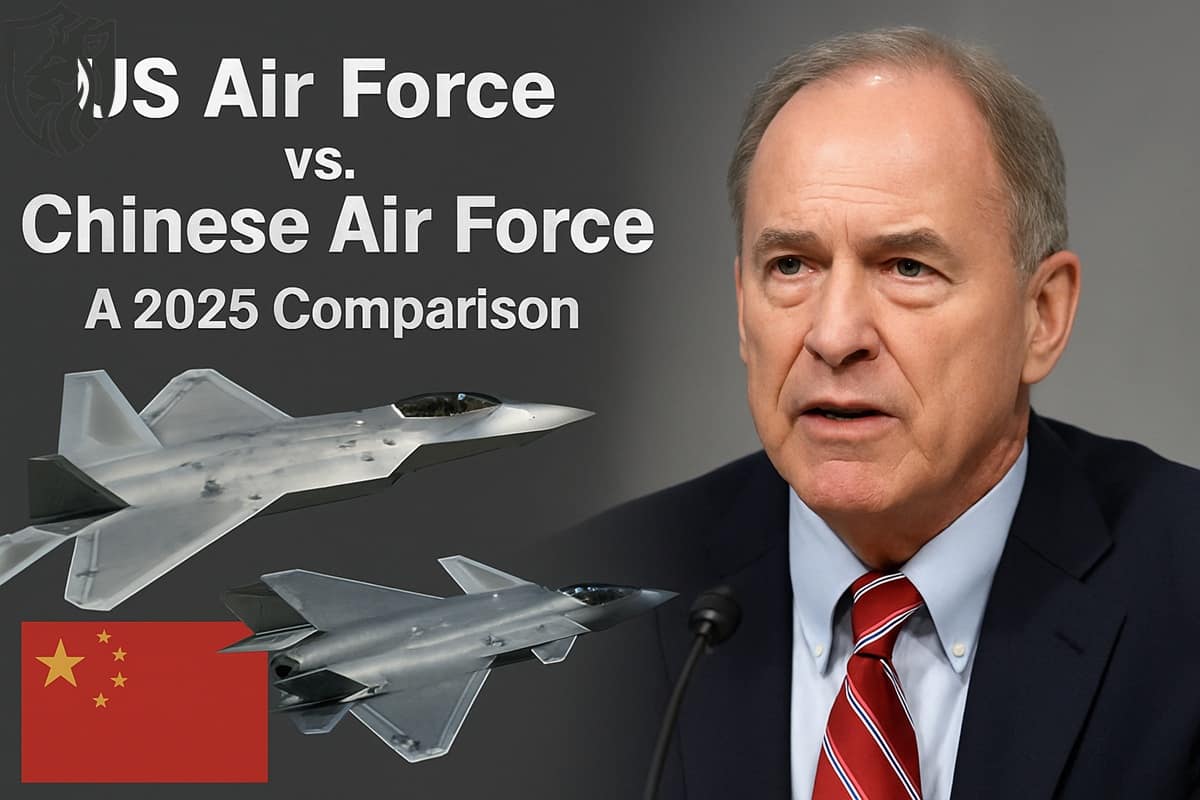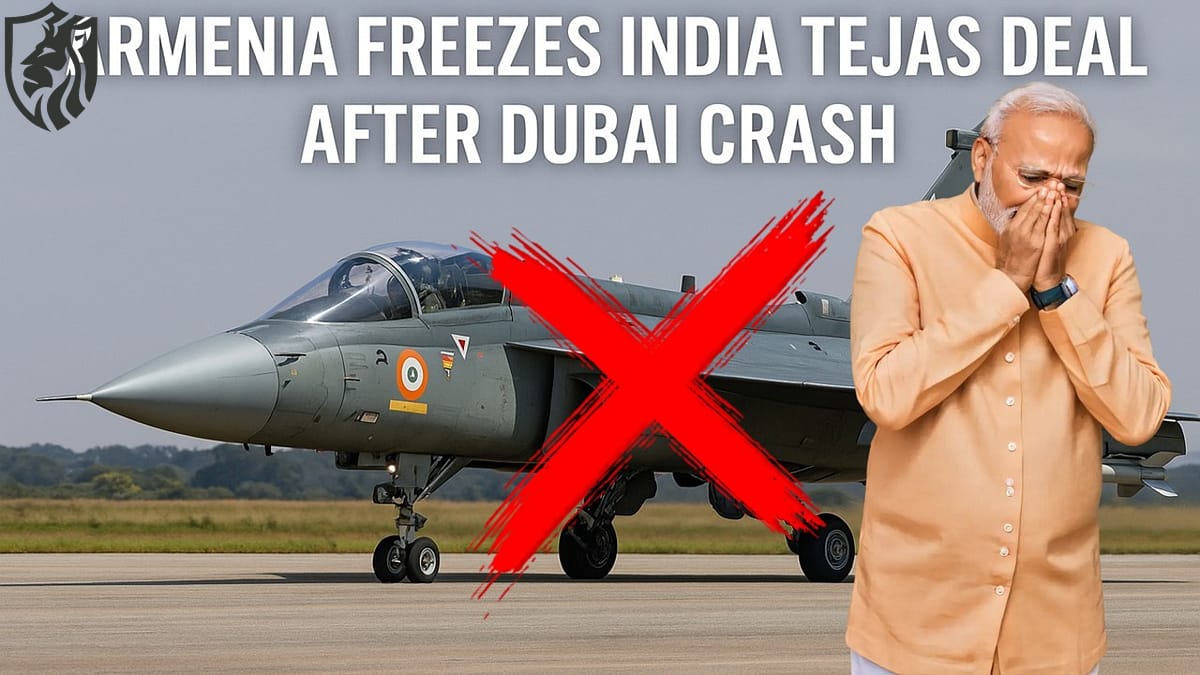
KF-21
A quiet but important event took place at Sacheon Air Base on April 16, 2025. The base is located about 290 kilometres south of Seoul, South Korea.
The United Arab Emirates and South Korea were close to signing a letter of intent for military cooperation. This agreement would open a new chapter in their defense partnership. The cooperation focuses on the KF-21 Boramae, a next-generation fighter jet built by Korea Aerospace Industries.
According to Moroccan outlet Defence Arabic, the deal will allow UAE Air Force members to train on the KF-21.
They will also learn from operational units responsible for the aircraft’s deployment and maintenance.
A symbolic gesture was planned for the signing ceremony. Brigadier General Azzan Ali Abdul Aziz Al Nuaimi would fly a KF-21 prototype as a test.
The agreement goes beyond a diplomatic handshake. It signals a deeper partnership between two ambitious countries in the global defense market.
Both countries aim to challenge the dominance of traditional Western arms suppliers. They also want to reshape alliances in an increasingly unstable region. The UAE’s interest in the KF-21 comes as it works hard to diversify its defense procurement options.
Abu Dhabi has been trying to become less reliant on Western suppliers while building up its own technological know-how. For a long time, it relied on American and European systems like the F-16 Fighting Falcon and the Mirage 2000.

The KF-21
The KF-21 is South Korea’s most famous weapon, and it is quickly becoming known as a major player in the world arms market. The agreement brings together two very different strategic goals: South Korea wants to get into the lucrative Middle Eastern markets, and the UAE wants to get more advanced skills and technological independence.
The signing at Sacheon is a real step toward these goals, but it has effects that go far beyond the runway. They include geopolitics, new technologies, and how the global defense industry is changing.
Before you can understand what this relationship means, you need to look at the KF-21 Boramae. The KF-21, whose name means “Hawk” in Korean, is a 4.5-generation multirole fighter meant to fill the gap between older planes and fifth-generation platforms like the F-35 Lightning II that can fly completely stealthily.
The program started in 2015 with a budget of about $6.8 billion, which is a small part of what it cost to make the F-35. Korea Aerospace Industries created it with assistance from the South Korean government and a 20% contribution from Indonesia.
The plane is 16.9 metres long, has wings that are 11.2 metres wide, and weighs 11.8 tonnes when it is empty. It can carry up to 25.6 tonnes, which is the same amount of weight as the French Rafale, the Eurofighter Typhoon, and the F/A-18 Super Hornet.
KF-21 Engines
The KF-21 has two General Electric F414-GE-400K turbofan engines, each with an afterburner that produces 22,000 pounds of thrust. It can reach supersonic speeds and has two external 2,000-litre fuel tanks that give it a battle range of about 1,000 kilometres.
An Active Electronically Scanned Array radar made by Hanwha Systems is at the heart of the KF-21’s impressive electronics suite. When paired with an infrared search and track system, this radar makes it easier for the plane to see what’s going on around it and hit its targets.
The jet’s low-observable design incorporates radar-absorbent materials, a partially hidden weapons bay, and frequency-selective surface technology on its radome. These features make the jet less visible to radar than older fighters like the F-16.
The KF-21 doesn’t have the internal weapons bay of a true fifth-generation fighter, but it can carry a wide range of weapons across 10 external hardpoints. These include air-to-air missiles from Europe (Meteor and IRIS-T), the United States (AIM-120 AMRAAM and AGM-84 Harpoon), and South Korea (Cheonryong cruise missiles).
It also has a 20 mm M61A2 Vulcan gun for firing at close range. With an expected unit cost of $80 to $100 million, the KF-21 strikes a good balance between capability and affordability. The latter feature makes it a viable choice for countries that want modern fighters but can’t afford the F-35.
The plant’s growth has been incredibly rapid. In July 2022, the first prototype flew. By early 2025, four single-seat prototypes and two twin-seat prototypes had logged hundreds of flight hours.
Korea’s KF-16s Missiles
Tests have included refuelling from the air, firing the IRIS-T missile, and flying in company with South Korea’s KF-16s to make sure they can work together.
The Republic of Korea Air Force plans to replace its old F-4 Phantom IIs and F-5 Tigers with 120 KF-21s by 2032. The programme’s cost, which was only 1.5% of the F35’s development budget, shows how well South Korea can produce advanced technology on a tight budget. The UAE is likely to appreciate this due to its practical approach to purchasing defense equipment.
Along with its work on the KF-21, the UAE has been strengthening its military ties with South Korea for a long time. Abu Dhabi and South Korea signed a $3.5 billion deal in January 2022 to purchase the Cheongung II medium-range surface-to-air missile system. This transaction was one of Seoul’s biggest arms export deals at the time.
The next year, when South Korean President Yoon Suk Yeol went to the UAE, the two countries signed 13 memorandums of understanding, two of which were about military matters.
The Tawazun Council, the UAE’s arms procurement body, and South Korea’s Defense Acquisition Program Administration all agreed to work together more. At the same time, Tawazun and Korea Aerospace Industries started a joint project to make a next-generation cargo plane.
UAE to invest in Korean Industries
As part of these agreements, the UAE promised to spend $30 billion on South Korean industries, including defence, which set the stage for closer cooperation.
Defense News Today observed that the KF-21 letter of intent represents a logical progression in this direction. It indicates that both sides trust each other and have similar strategic goals.
When it comes to geopolitics, the UAE’s move toward South Korea is part of a larger trend among Gulf states to expand their defense ties. The UAE has counted on American platforms for decades. It has 79 F-16E/F Block 60 Desert Falcons, which are some of the most advanced fighters ever made.
It also has 60 Mirage 2000-9s from France and, in 2021, signed a $19 billion deal for 80 Rafale F4 jets, showing that it was ready to balance its purchases from Western countries.
A bid by the UAE for the F-35 has been held up by U.S. worries about Abu Dhabi’s ties with China, especially its work with Huawei.
The collapse of the F-35 deal in 2021 compelled the UAE to investigate alternative options. The KF-21 is one of them. The F-35 has strict operational limits. The KF-21, on the other hand, offers more freedom and the chance to share technology, which fits with the UAE’s goal of growing its defense industry.
South Korea, for its part, views the Middle East as a key target for its expanding arms industry. At first, the KF-21 Program was a joint venture with Indonesia. However, Jakarta’s late payments have caused problems. As of mid-2022, sources say that Indonesia owes over $557 million.
South Korea’s Defense Acquisition Program
Because of this, there were reports that the UAE might buy Indonesia’s 20% stake; in 2023, South Korea’s Defence Acquisition Program Administration denied these rumours. Regardless, the UAE’s involvement increases the likelihood of exporting the KF-21, either as a partner or a potential buyer.
Other countries, like Poland, the Philippines, and Saudi Arabia, have shown interest. During a visit by South Korean military officials in January 2024, Saudi Arabia discussed a possible 5th- or 6th-generation fighter based on the KF-21 design.
The UAE’s involvement could give the program more credibility, which would bring in more buyers and put South Korea directly in competition with big names like Lockheed Martin and Dassault.
The fact that Brigadier General Al Nuaimi flew the plane at Sacheon is a strong sign of this relationship. As the head of the UAE Air Force Warfare Centre, Al Nuaimi can easily check out the KF-21’s abilities and impact our future choices about what to buy.
His appearance, along with that of Major General Rashed Mohammed A. Al Shamsi, who is responsible for the UAE Air Force and Air Defence, shows that the UAE is serious about getting involved.
This approach mirrors a broader shift in military partnerships, prioritising trust development through practical experience over mere contracts.
UAE’s Air Force
The flight, which took place at an altitude of 4,500 metres and speeds of more than 1,000 kilometres per hour, gave Al Nuaimi a chance to test the KF-21’s handling and electronics, providing him firsthand information about how it might be used in the UAE’s air force.

Historically, the UAE has used its air force to demonstrate its strength and deter potential threats, particularly Iran. Abu Dhabi has shown readiness to use advanced platforms in complex conflicts. Its F-16s and Mirage 2000s have seen action in Yemen and Libya.
The KF-21’s extended range, heavy payload, and sensor fusion could boost these operations. Its AESA radar outperforms the F-16E/F’s mechanical radar systems.
The KF-21 integrates precision weapons like the Taurus cruise missile, suiting the UAE’s standoff strike strategy. It is also cheaper than the Rafale, enabling the UAE to field more aircraft. Lower costs help balance spending on cyberwarfare and unmanned systems.
However, integrating the KF-21 into a mostly Western-made fleet poses challenges. It would require new maintenance procedures and special training programmes.
UAE-South Korea ties
Politically, deeper UAE-South Korea ties might complicate relations with the United States, its primary security partner. Washington is wary of non-Western suppliers gaining influence in the Gulf. It has opposed Chinese and Russian arms deals in the region.
The KF-21’s use of American components, like the F414 engine, could ease some U.S. concerns. However, the U.S. may still perceive South Korea’s advances as a challenge to its dominance.
South Korea faces significant stakes. Failure to meet UAE expectations could harm its reputation as a reliable arms exporter. This point is particularly relevant with Turkey and India developing their own advanced fighters. The UAE-South Korea relationship mirrors broader shifts in the global defense industry.
New powers like South Korea are shaking up a market that the US, Russia, and Europe have long controlled. They are achieving their goals by offering more affordable options that middle powers seeking strategic independence find appealing.
Conclusion
The KF-21’s success could encourage other countries to form similar partnerships, which could create a new “non-Western” defense production bloc. The TF-X from Turkey and the Advanced Medium Combat Aircraft from India are already on the way. This means that the arms market is moving toward being multipolar.
The UAE sees the KF-21 as more than just a fighter jet. It is also a step toward becoming technologically independent, which is a goal shared by other Gulf states, like Saudi Arabia, which is looking into its part in the KF-21 program.
Despite the signed letter of intent at Sacheon, the future of this relationship is still unclear. Is the UAE genuinely considering purchasing the KF-21, or is the current agreement merely an exploratory step to evaluate available options? In light of South Korea’s growing power in the Gulf, what will the US do?
Will the KF-21 truly transform the air power landscape? From my perspective, this deal is a brave step that shows how smart the UAE is at planning ahead and how skilled South Korea is at engineering.
This situation challenges the current state of affairs, prompting Western companies to reconsider their strategies in an uncertain market. However, there are many technical and diplomatic problems to solve on the way ahead.
The real test will be whether this union can turn symbolic actions into real-world success. The KF-21’s journey is important to the UAE and South Korea, as well as the global balance of power.
References
- Defense Arabic – defensearabic.com
- Korea Aerospace Industries (KAI)—koreaaero.com
- DAPA, South Korea – dapa.go.kr
- UAE Ministry of Defence – mod.gov.ae
- Reuters – UAE missile deal – reut.rs/uae-korea-missile
- Jane’s Defence News – janes.com
- Defense News Today – defensenewstoday.info
- Pakistan Defense Forum (Facebook)—fb.com/pakistandefenseforum
- The National News (UAE)—thenationalnews.com/uae
- FlightGlobal – flightglobal.com









